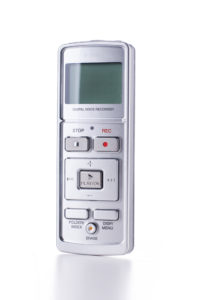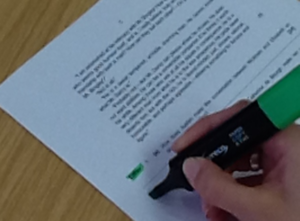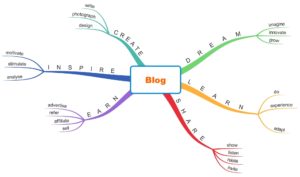[cs_content][cs_section parallax=”false” style=”margin: 0px;padding: 45px 0px;”][cs_row inner_container=”true” marginless_columns=”false” style=”margin: 0px auto;padding: 0px;”][cs_column fade=”false” fade_animation=”in” fade_animation_offset=”45px” fade_duration=”750″ type=”1/1″ style=”padding: 0px;”][cs_text]
Multisensory Strategies
Multisensory learning encompasses visual, auditory, and kinaesthetic experiences in order to develop memory and the learning of written language. Using multisensory strategies will give effective teaching that is clear, direct, cumulative, concentrated and centred on the structure of language.
Pupils with dyslexia can learn well but need support with sound (phonological) and print (orthographic) processing, to help them connect the spoken sounds to the printed words.
Learners with dyslexia may typically prefer:
- seeing
- feeling
- discussing and doing
as opposed to:
- listening
- reading
- writing
[/cs_text][/cs_column][/cs_row][cs_row inner_container=”true” marginless_columns=”false” style=”margin: 0px auto;padding: 0px;”][cs_column fade=”false” fade_animation=”in” fade_animation_offset=”45px” fade_duration=”750″ type=”1/1″ style=”padding: 0px;”][cs_text]
Aspects of multisensory teaching:
[/cs_text][/cs_column][/cs_row][cs_row inner_container=”true” marginless_columns=”false” style=”margin: 0px auto;padding: 0px;”][cs_column fade=”false” fade_animation=”in” fade_animation_offset=”45px” fade_duration=”750″ type=”1/1″ style=”padding: 0px;”][x_accordion][x_accordion_item title=”Systematic and Cumulative” open=”false”]Multisensory language instruction requires that the organisation of material follows the logical order of the language. The sequence begins with the easiest and most basic concepts and progresses methodically to more difficult material. Each concept must also be based on those already learned. Concepts taught must be systematically reviewed to strengthen memory.[/x_accordion_item][x_accordion_item title=”Direct” open=”false”]The inferential learning of any concept cannot be taken for granted. Multisensory language instruction requires direct teaching of all concepts with continuous learner-teacher interaction.[/x_accordion_item][x_accordion_item title=”Synthetic Analytic” open=”false”]Multisensory, structured language programs include both synthetic and analytic instruction. Synthetic instruction presents the parts of the language and then teaches how the parts work together to form a whole. Analytic instruction presents it in its entirety and teaches how this can be broken down into its component parts.[/x_accordion_item][x_accordion_item title=”Synthetic and Inclusive” open=”false”]All levels of language are addressed, often in parallel, including sounds (phonemes), symbols (graphemes), meaningful word parts (morphemes), word and phrase meanings (semantics), sentences (syntax), longer passages (discourse), and the social uses of language (pragmatics).[/x_accordion_item][/x_accordion][/cs_column][/cs_row][cs_row inner_container=”true” marginless_columns=”false” style=”margin: 0px auto;padding: 0px;”][cs_column fade=”false” fade_animation=”in” fade_animation_offset=”45px” fade_duration=”750″ type=”1/1″ style=”padding: 0px;”][cs_text]
Example of Multisensory Teaching
An example of a multisensory teaching technique can be seen on this Teacher’s TV video. Teaching children with dyslexia[/cs_text][x_accordion][x_accordion_item title=”Audio transcript” open=”true”]Narrator:
At Ewelme, the knowledge that several children in every class are likely to be affected by dyslexia informs their teaching practice. Using a fuzzy ball with a dyslexic pupil uses their sense of touch to reinforce learning. This is part of a multisensory approach adopted by the school which they find benefits all students, not just those with dyslexia.
Teacher:
Multisensory teaching really means that you are trying to teach to all the channels of input into somebody’s brain. We learn from every experience of touch and feel and smell and listening. With multisensory teaching you are trying to put the information into as many different parts of the brain as you can, because then if one part fails, another part will remember.
Teaching assistant:
I was writing on Hannah’s back to help her feel the shape of the letters in a different way, but she was listening to the letters and I was helping her to feel the way that the letters would be formed at the same time. In essence multisensory teaching is just basic, good practice that should be being carried out in all areas of the curriculum from foundation stage children all the way through to year six.
Teacher:
When we are teaching children to read and write it can be a laborious business for dyslexic children, and anything that enlivens words for them is excellent.
Teacher:
Being lively, being really animated as if you are really enjoying the lesson, even if you are really tired and you don’t feel like teaching that day is particularly important to dyslexic children, because they can easily switch off into much more interesting thoughts than your boring lesson.
Teacher:
The children start off with the alphabet in school, it’s their first big thing that they have to learn. This teacher teaching the reception children their alphabet, is putting it into more than just their listening memory. She’s associating it with pitch, so she is singing it, associating it with a rhythm through chanting and putting in a physical movement by swaying. This will help the children to remember much more easily.
Teacher:
The children and teacher are having fun, singing, joking, and having a very varied experience of a lesson. This suits dyslexic children.[/x_accordion_item][/x_accordion][/cs_column][/cs_row][cs_row inner_container=”true” marginless_columns=”false” style=”margin: 0px auto;padding: 0px;”][cs_column fade=”false” fade_animation=”in” fade_animation_offset=”45px” fade_duration=”750″ type=”1/1″ style=”padding: 0px;”][x_accordion][x_accordion_item title=”Auditory” open=”false”]Auditory
Combine listening with doing such as ‘look, cover, say’. For a version suited to secondary students, use a digital recorder or tablet device to:
- listen to the word being said
- say it
- spell it out, write and say the word
[/x_accordion_item][x_accordion_item title=”Colour / Kinaesthetic” open=”false”] Use different coloured highlighters for dates, key words, names, events or facts.
Use different coloured highlighters for dates, key words, names, events or facts.
Listening to suitable music helps some pupils while they concentrate. Use rhythm to learn by Mnemonics in a rap or rhyming style. An example is Richard of York Gave Battle in Vain, for colours of the rainbow.
Take the key words and phrases from a text and produce a spider diagram. This is different to a mind map. The spider diagram holds a central idea and key words and phrases are placed around it. Numbers can be placed to show the hierarchy of the information. An example can be downloaded here:
Spider diagram example Word doc
Spider diagram example pdf[/x_accordion_item][x_accordion_item title=”Targets” open=”false”]Having small target steps for pupils can help them see their progress towards a goal. The downloadable example in the resource list shows how this could be written up for a topic on pollution. From this a detailed mind map could be created.[/x_accordion_item][x_accordion_item title=”ICT” open=”false”]ICT – This is covered in Topic 3 of this unit. There is a variety of software available to help with text input, word prediction, spelling, and tricky words such as homophones. Kurzweil 3000 is one such software that has become a well known software for those with dyslexia.[/x_accordion_item][x_accordion_item title=”Voice & Visual” open=”false”] Voice – Mnemonic rhymes. Examples of mnemonic rhymes are the rhymes used for remembering the colours in the rainbow and the planets in the solar system. Other strategies also include using word ‘pegs’ to help memorise information by associating key words to a specific word in a list.
Voice – Mnemonic rhymes. Examples of mnemonic rhymes are the rhymes used for remembering the colours in the rainbow and the planets in the solar system. Other strategies also include using word ‘pegs’ to help memorise information by associating key words to a specific word in a list.
Visual –Mind Mapping
A mind map structures information and ideas in order of main idea or concept on the large branches, and secondary and tertiary related information on the thinner branches, as in the example shown above.[/x_accordion_item][x_accordion_item title=”Esteem” open=”false”]Esteem building is important for helping pupils with their writing. Using what is commonly known as a ‘feedback sandwich’ (in which a point for improvement is sandwiched between two positives) can help the pupil with constructive feedback for improvement.
1.) The opening scene in your story really captures the feel of a scary haunted house and it drew me in to want to know what happens… .
2.) If you included a little more description of the character and how she might be feeling this would help add a depth to the… .
3.) The final twist in the chapter was unexpected and very ingenious, I can see you have thought about the different ways to close a chapter and leave it open for more than one possibility.[/x_accordion_item][/x_accordion][/cs_column][/cs_row][cs_row inner_container=”true” marginless_columns=”false” style=”margin: 0px auto;padding: 0px;”][cs_column fade=”false” fade_animation=”in” fade_animation_offset=”45px” fade_duration=”750″ type=”1/3″ style=”padding: 0px;”][x_blockquote cite=”What strategies did you try for yourself?” type=”left”]Emma talks about strategies she used to help with writing.[/x_blockquote][/cs_column][cs_column fade=”false” fade_animation=”in” fade_animation_offset=”45px” fade_duration=”750″ type=”1/3″ style=”padding: 0px;”][x_image type=”circle” src=”https://connecttodesign.co.uk/wp-content/uploads/2016/04/shutterstock_176715719.jpg” alt=”” link=”false” href=”#” title=”” target=”” info=”none” info_place=”top” info_trigger=”hover” info_content=””][/cs_column][cs_column fade=”false” fade_animation=”in” fade_animation_offset=”45px” fade_duration=”750″ type=”1/3″ style=”padding: 0px;”][x_audio_player src=”https://connecttodesign.co.uk/wp-content/uploads/2016/04/emma-own-strategies.mp3″ advanced_controls=”true” preload=”none” autoplay=”false” loop=”false”][/cs_column][/cs_row][cs_row inner_container=”true” marginless_columns=”false” style=”margin: 0px auto;padding: 0px;”][cs_column fade=”false” fade_animation=”in” fade_animation_offset=”45px” fade_duration=”750″ type=”1/1″ style=”padding: 0px;”][x_accordion][x_accordion_item title=”Audio transcript” open=”true”]Question
So while you were at primary school and secondary school, you didn’t have a diagnosis then, what kind of strategies did you try for yourself to help yourself improve your writing and reading?
Emma
In primary school I really didn’t do much, I was quite lost in primary school, but in secondary school I would use the handwriting books that it was advised in primary school that I should use, I used them at home, my bedroom, my desk at home and things. I also had a love of poetry so I used to write poems, I used to write short stories, and I just used to get hold of a notebook and write whatever I felt, and I guess in a way that was a kind of practice.
[/x_accordion_item][/x_accordion][/cs_column][/cs_row][cs_row inner_container=”true” marginless_columns=”false” style=”margin: 0px auto;padding: 0px;”][cs_column fade=”false” fade_animation=”in” fade_animation_offset=”45px” fade_duration=”750″ type=”1/1″ style=”padding: 0px;”][cs_text]
Assignment
Create a multisensory activity for a pupil to help them practice and remember a word, or a key piece of information.[/cs_text][/cs_column][/cs_row][cs_row inner_container=”true” marginless_columns=”false” style=”margin: 0px auto;padding: 0px;”][cs_column fade=”false” fade_animation=”in” fade_animation_offset=”45px” fade_duration=”750″ type=”1/1″ style=”padding: 0px;”][cs_text]
References
[/cs_text][/cs_column][/cs_row][cs_row inner_container=”true” marginless_columns=”false” style=”margin: 0px auto;padding: 0px;”][cs_column fade=”false” fade_animation=”in” fade_animation_offset=”45px” fade_duration=”750″ type=”1/1″ style=”padding: 0px;”][x_feature_list][x_feature_box title=”Resource” title_color=”” text_color=”” graphic=”icon” graphic_size=”35px” graphic_shape=”circle” graphic_color=”#ffffff” graphic_bg_color=”rgb(255, 89, 148)” align_h=”left” align_v=”top” side_graphic_spacing=”20px” max_width=”none” child=”true” connector_width=”1px” connector_style=”dashed” connector_color=”#272727″ link_text=”Small steps planning” href=”https://connecttodesign.co.uk/wp-content/uploads/2016/05/Small-Steps-Target-Planning-Sheet-Word-doc.docx” href_title=”” href_target=”” link_color=”” graphic_icon=”book”]Small steps planning example.[/x_feature_box][x_feature_box title=”Resource” title_color=”” text_color=”” graphic=”icon” graphic_size=”35px” graphic_shape=”circle” graphic_color=”#ffffff” graphic_bg_color=”rgb(255, 89, 148)” align_h=”left” align_v=”top” side_graphic_spacing=”20px” max_width=”none” child=”true” connector_width=”1px” connector_style=”dashed” connector_color=”#272727″ link_text=”Spider diagram example .docx” href=”https://connecttodesign.co.uk/wp-content/uploads/2016/05/Spider-diagram-for-pollution-word-doc.docx” href_title=”” href_target=”” link_color=”” graphic_icon=”book”]Spider diagram example for pollution.[/x_feature_box][x_feature_box title=”Resource” title_color=”” text_color=”” graphic=”icon” graphic_size=”35px” graphic_shape=”circle” graphic_color=”#ffffff” graphic_bg_color=”rgb(255, 89, 148)” align_h=”left” align_v=”top” side_graphic_spacing=”20px” max_width=”none” child=”true” connector_width=”1px” connector_style=”dashed” connector_color=”#272727″ link_text=”Software trial signup” href=”https://www.kurzweiledu.com/trialsignup.php” href_title=”” href_target=”” link_color=”” graphic_icon=”internet-explorer”]Link to Kurzweil free trial download page.[/x_feature_box][/x_feature_list][/cs_column][/cs_row][/cs_section][/cs_content]